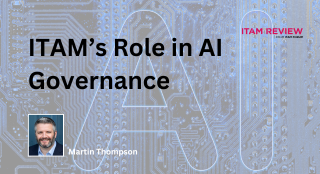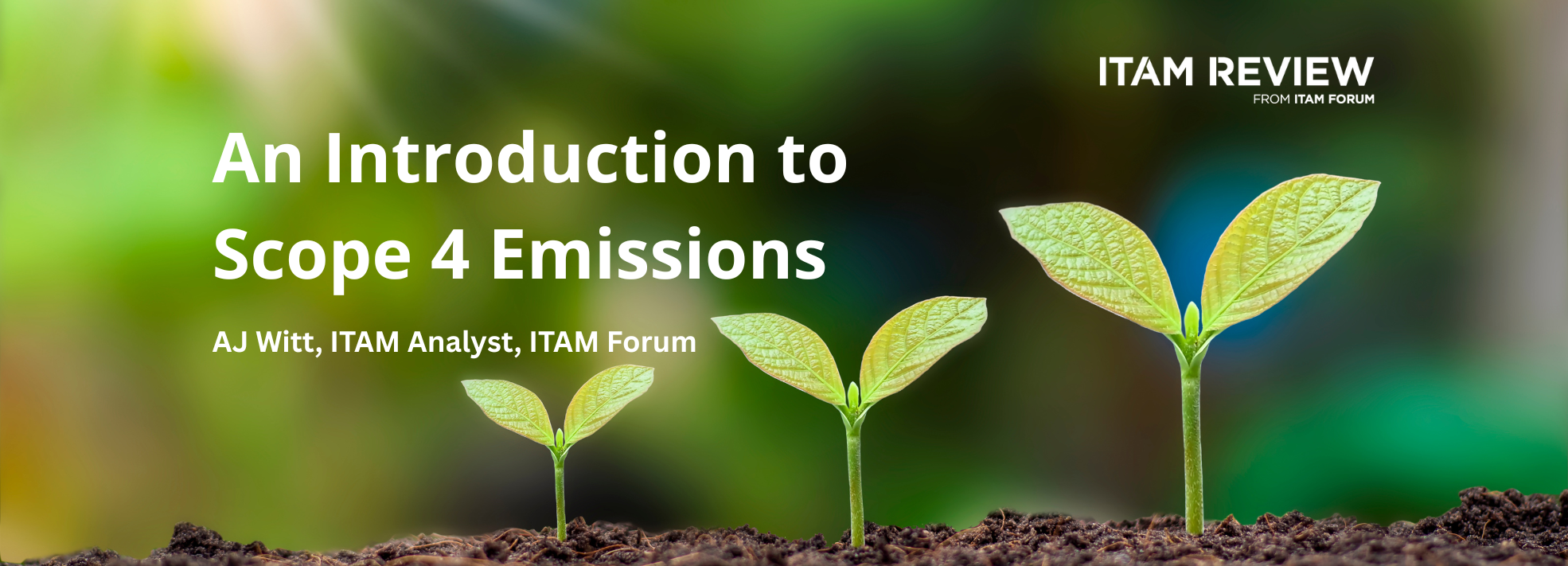IT Asset Management: How to Bring Value To Your Organisation (Part 2/2)
This article has been contributed by Barb Rembiesa from IAITAM.
Part Two: Key Processes
 Once you understand how these foundational processes exist within the enterprise, then you are in the position to venture into the other key processes that support the ITAM program:
Once you understand how these foundational processes exist within the enterprise, then you are in the position to venture into the other key processes that support the ITAM program:
Acquisition Management:
Effective IT acquisitions empowers the rest of your IT Asset Management program by applying process, determining pathways for exceptions and generating the initial documentation and records for the IT assets before the acquisition is even completed.
Asset Identification:
Asset ID is a key enabler of many related activities in the Software Life-cycle, Hardware Life-cycle, IT Acquisition and Documentation Management Key Process Areas at the point when an organization applies that unique identifier to incoming IT assets.
Compliance Management:
Compliance and Legislation Management are the focal point for risk avoidance and audit response within an ITAM program, for what can turn into a costly venture for the organization in time, resources and reputation if improperly handled or unprepared.
Disposal Management:
A mature disposal process will allow your enterprise to avoid costly storage of unused assets, mitigate risk associated with disposal, reallocation of software, and maintain security of information before the disposal process all the while increasing return on investment.
Documentation Management:
This process area encompasses the management for all IT asset-related documents throughout most of their life-cycle, from request and acquisition onward throughout the enterprise.
Financial Management:
Financial asset management is the backbone to savings within your ITAM program ranging from budgeting to invoice reconciliation in order to uncover savings and determine true cost of ownership to the bottom line for IT assets.
Legislation Management:
Managing legislation is the focal point for any laws or regulations that could have an impact on your organization and must be monitored and not only for where the assets reside but how they are being used.
Project Management:
Project Management defines those characteristics of a project team that are essential to successfully conducting the initiatives that are needed to meet the goals of the ITAM program. Like any other business initiative, project management will play a key role in bringing about a positive result or deliverable.
Vendor Management:
Vendor Management defines attributes of maturity in how well you are communicating with, leveraging and negotiating with your vendors. Vendor Management is concerned with building a long term and mutually beneficial relationship with your vendors.
As an example of what impact these key process areas have on an organization, I have chosen the tracking of a paid invoice – an area if managed properly, will yield savings and risk avoidance for an organization. In this example, without ITAM best practices in place, the Acquisition process orders the assets but is unaware of when the asset arrived. Asset Identification does not forward the correct documentation to Financial, Acquisition, Compliance or Documentation management areas. At this point the asset is not recorded anywhere in your organization and often goes missing from or after it leaves the receiving area.
If the asset was then deployed and the proper documentation was not routed to the appropriate documentation storage area, then your organization at this point may very well be a target for a compliance audit – assets deployed but undocumented. Your organization could be subject to a hefty settlement fine all because of the simple fact that your documentation was not properly routed.
IAITAM sees articles and news stories all the time about organizations not knowing where their assets are and the majority of these infractions are because the correct business practices are not in place for an ITAM program. This is a common scenario repeated in organizations around the globe on a grand scale.
- Do you know where your documentation is?
- Do you know what documentation you are required to maintain?
- Do you know where your assets are?
This example could prove considerable painful for the organization not only because of fines and fees, but also embarrassing because of bad press. Not only does the organization need to create the policies to guide best practice pertaining to the lifecycle management of its IT assets, but it must identify those contributing to and supporting the program. Roles and responsibilities must be identified the necessary education and communication of the tasks they are to perform need to be addressed.
Roles within the ITAM program also have relationships and dependencies. One note though is that roles and job titles are very different from one industry to another and one organization to another. One job title may have many roles or “wear many hats” to perform according to ITAM best practices. Each key process area is unique to some extent in that their roles have a common thread – a KPA Manager. This person would be ultimately responsible for the performance of that key process area but may not bear the title of that role solely as their job title.
A typical title within an organization may be Software Asset Manager while their roles may include acquisition manager, compliance manager, documentation manager, negotiator, and the list goes on. Other titles may include Hardware Asset Manager and IT Asset Manager. Each has multiple roles to perform in order to bring value to the organization. Each person supporting the ITAM program within your organization should receive proper education to perform their roles but also be informed as to the business drivers and goals of the organization in support of their ITAM efforts.
IAITAM’s suggestion to any organization is to begin developing a plan, get educated as to your options, and always look at the whole picture. IT Asset Management is not about simply counting assets, it is a core program in any organization and should be incorporated into the enterprise at a level of importance equal to the significance placed on the optimum performance of the assets it manages.
This article has been contributed by Barb Rembiesa from IAITAM.
Can’t find what you’re looking for?
More from ITAM News & Analysis
-
Broadcom vs Siemens AG - A Brewing Storm
The ongoing legal battle between VMware (under Broadcom ownership) and Siemens is yet another example of why ITAM goes far beyond license compliance and SAM. What might, at first glance, appear to be a licensing dispute, ... -
Shifting Left Together: Embedding ITAM into FinOps Culture
During one of the keynotes at the FinOps X conference in San Diego, JR Storment, Executive Director of the FinOps Foundation, interviewed a senior executive from Salesforce. They discussed the idea of combining the roles of ... -
Addressing the SaaS Data Gap in FinOps FOCUS 2.1
I recently reported on the FinOps Foundation’s inclusion of SaaS and Datacenter in its expanded Cloud+ scope. At that time, I highlighted concerns about getting the myriad SaaS companies to supply FOCUS-compliant billing data. A couple ...
Podcast
ITAM training
Similar Posts
-
The M&S Cyberattack: How IT Asset Management Can Make or Break Your Recovery
Marks & Spencer (M&S), the iconic UK retailer, recently became the latest high-profile victim of a devastating cyberattack. Fellow retailers The Co-Op and Harrods were also attacked. Recent reports suggest the rapid action at the Co-Op ... -
AI in ITAM: Insightful Signals from the Front Line
During our Wisdom Unplugged USA event in New York in March 2025, we engaged ITAM professionals with three targeted polling questions to uncover their current thinking on Artificial Intelligence—what concerns them, where they see opportunity, and ... -
How ISO/IEC 19770-1 Can Help Meet FFIEC Requirements
In the world of ITAM, the regulatory spotlight continues to intensify, especially for financial institutions facing increasing scrutiny from regulatory bodies due to the growing importance of IT in operational resilience, service delivery, and risk management. ... -
An Introduction to Scope 4 Emissions
Executive Summary For ITAM teams, sustainability is a core responsibility and opportunity. Managing hardware, software, and cloud resources now comes with the ability to track, reduce, and report carbon emissions. Understanding emission scopes—from direct operational emissions ...





